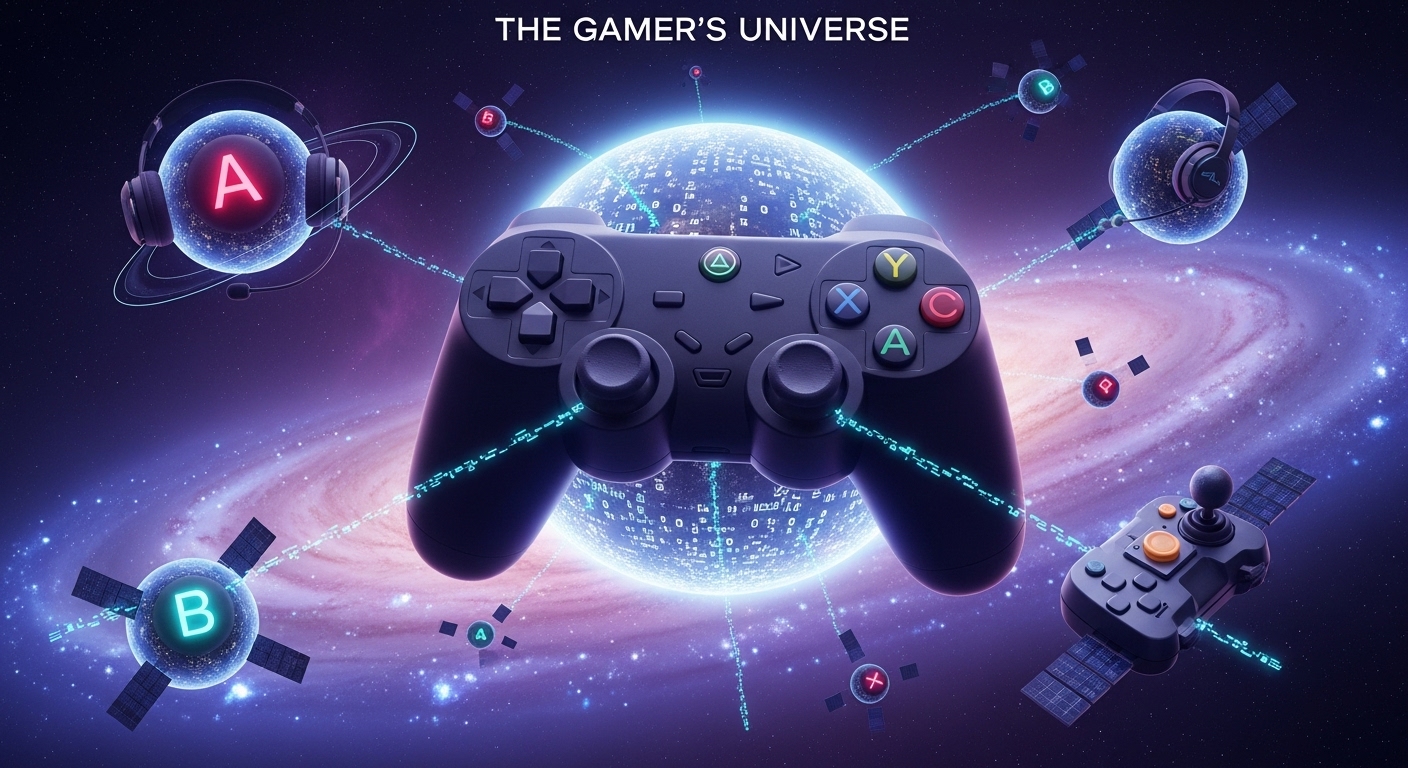Gaming has come a long way from its humble beginnings. What started as a simple pastime has evolved into a multi-billion-dollar global industry that engages millions of people worldwide. In this blog post, we will explore the history, advancements, and cultural significance of video gaming. From the first arcade games to the immersive virtual reality experiences of today, we will delve into how gaming has transformed and why it continues to captivate people of all ages.
The Origins of Gaming: The Birth of a New Medium
The history of video gaming can be traced back to the late 1940s and early 1950s. The very first interactive electronic game was developed by Thomas T. Goldsmith Jr. and Estle Ray Mann in 1947. Known as the Cathode Ray Tube Amusement Device, it was a simple military radar simulator used for entertainment purposes. However, it wasn’t until the 1960s that games began to take a more recognizable form.
In 1958, physicist William Higinbotham created one of the earliest video games, Tennis for Two. This game was displayed on an oscilloscope and allowed players to control paddles on the screen, making it a precursor to the legendary Pong. Though these early games were rudimentary, they laid the foundation for future advancements in the gaming world.
The true birth of the video game industry came in the early 1970s, with the release of arcade games like Pong (1972) and Space Invaders (1978). These games were an instant hit and set the stage for the golden age of arcade gaming. Pong was the first commercially successful arcade game, introducing the concept of the video game machine and providing the first taste of interactive entertainment for many players.
The Rise of Home Consoles
While arcade gaming was booming, the desire for gaming at home also began to grow. In the late 1970s and early 1980s, the first home video game consoles were released. Companies like Atari and Nintendo began to develop consoles that allowed players to enjoy video games in the comfort of their own homes.
The Atari 2600, released in 1977, was the first major home console to use interchangeable game cartridges. This innovation allowed players to own multiple games and easily switch between them, making the home gaming experience more versatile and enjoyable. However, the video game market faced a downturn in the early 1980s due to an oversaturation of low-quality games, leading to the famous video game crash of 1983.
The Resurgence of Video Games
The video game industry quickly bounced back from the crash, thanks in large part to the release of the Nintendo Entertainment System (NES) in 1985. Nintendo’s success came from its strong focus on game quality, with classics like Super Mario Bros., The Legend of Zelda, and Metroid. These games featured colorful graphics, engaging gameplay, and memorable characters that helped to re-establish gaming as a mainstream form of entertainment.
With the success of the NES, the market for home consoles expanded rapidly. Sega followed suit with its Sega Genesis (also known as the Mega Drive), and other companies began to develop their own systems, including Sony’s PlayStation, which would eventually redefine the industry.
The 3D Revolution: Entering the Next Generation
In the mid-1990s, the world of gaming underwent a dramatic shift with the advent of 3D technology. Consoles like the Sony PlayStation and Nintendo 64 revolutionized the gaming landscape by introducing fully realized three-dimensional worlds. Games like Super Mario 64 and Final Fantasy VII were groundbreaking in their ability to immerse players in expansive environments, offering a level of interactivity and freedom that was previously unheard of in gaming.
The success of 3D gaming pushed developers to explore new storytelling methods and gameplay mechanics. The medium was no longer just about jumping from platform to platform or shooting enemies in a linear fashion. Games like Metal Gear Solid and The Legend of Zelda: Ocarina of Time introduced complex narratives, moral choices, and intricate world-building, showing that video games could be a serious artistic form, on par with movies and literature.
The Power of Graphics: Moving Toward Realism
As the 3D era continued to evolve, the demand for more realistic graphics and gameplay became a driving force in the industry. The late 1990s and early 2000s saw rapid technological advancements in hardware, with consoles like the PlayStation 2 and Xbox boasting much more powerful graphics processors.
This era saw the rise of photorealistic visuals in games, thanks in part to technological breakthroughs like motion capture and advanced texture mapping. Games like Grand Theft Auto III, Halo: Combat Evolved, and The Elder Scrolls III: Morrowind were groundbreaking, offering vast, open worlds filled with realistic details and dynamic weather systems. The immersive quality of these games made them incredibly popular, establishing the first true wave of 3D, open-world games that would define the next decade of gaming.
The Online Revolution: Multiplayer Gaming and Connectivity
The early 2000s also marked the rise of online multiplayer gaming, a game-changer for the industry. With the advent of faster internet speeds, players were no longer confined to playing games against the AI or local friends. They could now compete against or cooperate with people from around the world. Online multiplayer games like Halo 2, World of Warcraft, and Counter-Strike became huge successes, laying the foundation for the booming esports industry that would follow.
One of the most significant changes during this period was the introduction of digital distribution. Platforms like Steam (which launched in 2003) and Xbox Live allowed players to purchase and download games directly to their consoles or PCs. This eliminated the need for physical discs and opened up new opportunities for indie developers to reach a global audience.
The rise of online gaming also led to the development of massive multiplayer online games (MMOs). Games like World of Warcraft became cultural phenomena, with millions of players around the world participating in complex, persistent virtual worlds. These games allowed for social interactions, trade, and cooperative missions, creating a sense of community that transcended geographical boundaries.
Social Gaming: From Couch Co-op to Online Communities
As online gaming grew, so too did the social aspects of gaming. While couch co-op (playing with friends on the same console) had been a staple of earlier generations, online multiplayer gaming allowed people to connect with friends and strangers alike from all over the world. Platforms like PlayStation Network, Xbox Live, and Steam became hubs for social interaction, where players could chat, form teams, and share their experiences.
This social aspect has only grown over the years. Games like Fortnite and Among Us turned gaming into a social experience, often blending gaming with real-time communication and collaboration. Streaming platforms like Twitch have also helped turn gaming into a spectator sport, where players can watch others play live and interact with them through chats.
The Current State of Gaming: AAA Titles and Indie Innovations
As of today, the gaming industry is dominated by both AAA (high-budget, big-studio) games and indie titles. The AAA sector continues to deliver blockbuster experiences, with games like The Witcher 3, The Last of Us Part II, and Cyberpunk 2077 pushing the boundaries of graphics, storytelling, and gameplay. These titles often feature expansive open worlds, intricate character development, and complex narratives, drawing players into immersive experiences.
At the same time, the indie gaming scene has flourished. Games like Hades, Celeste, and Hollow Knight have shown that smaller studios can create critically acclaimed titles with innovative gameplay mechanics and unique art styles. Indie games often explore niche genres and experimental storytelling, allowing developers to take risks and challenge conventions in ways that large studios might not.
Virtual Reality and Augmented Reality: The Next Frontier
Looking toward the future, virtual reality (VR) and augmented reality (AR) are poised to reshape the gaming landscape once again. While VR has been around in some form for decades, it has only recently gained significant traction with devices like the Oculus Rift, PlayStation VR, and HTC Vive. VR gaming offers players a fully immersive experience, allowing them to step into the game world and interact with it in ways that traditional screens cannot match.
Games like Beat Saber, Half-Life: Alyx, and The Walking Dead: Saints & Sinners have demonstrated the potential of VR to deliver unique, physically interactive experiences. AR, on the other hand, has brought us games like Pokémon Go, which blends real-world environments with in-game elements, creating an entirely new type of gaming experience.
As technology continues to advance, it’s likely that we will see even more innovation in these areas. Artificial intelligence (AI), cloud gaming, and haptic feedback are just a few of the technologies that could take gaming to new heights, offering players unprecedented levels of immersion and realism.
The Cultural Impact of Gaming
Gaming has evolved from a niche hobby into a cultural phenomenon. Today, video games are a major part of mainstream culture, influencing everything from art and music to film and fashion. The rise of esports has transformed gaming into a professional sport, with tournaments drawing millions of viewers and offering substantial cash prizes.
In addition to its entertainment value, gaming has become a platform for self-expression and creativity. Games like Minecraft and Fortnite allow players to build and share their own creations, while modding communities enable players to modify and enhance existing games in endless ways.
Video games have also become a platform for storytelling, with many games exploring deep, meaningful themes that resonate with players on an emotional



